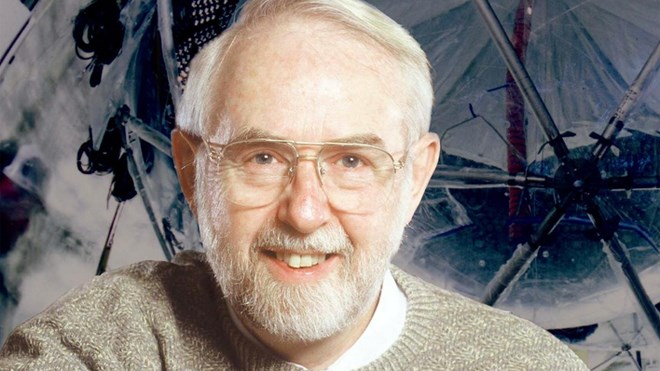The work done at the Sudbury Neutrino Observatory has been getting a lot of attention lately.
A month ago, the observatory's director — Queen’s University professor emeritus Arthur McDonald — won the 2015 Nobel Prize in Physics.
Now the Sudbury Neutrino Observatory (SNO) Collaboration, represented by McDonald, has shared the 2016 Breakthrough Prize in Fundamental Physics.
In a press release, Laurentian University said it wants to acknowledge Doug Hallman, professor emeritus of physics at the university, for his contributions to the project.
With the steady expansion of Laurentian’s research in particle astrophysics, he and a total of 22 Laurentian faculty members, past graduate students and post-doctoral researchers are all among the recipients of this honour.
The prize was presented by the Breakthrough Prize Foundation “for the fundamental discovery of neutrino oscillations, revealing a new frontier beyond, and possibly far beyond, the standard model of particle physics.”
The $3-million prize is shared with four other international experimental collaborations studying neutrino oscillations: the Superkamiokande, Kamland, T2K/K2K and Daya Bay scientific collaborations.
The research at the Sudbury Neutrino Observatory, two kilometres underground in Vale’s Creighton mine demonstrated that neutrinos change their type – or flavour – as they travel to Earth from the Sun. The finding proves that neutrinos have a mass greater than zero. The results also confirmed the theories of energy generation in the Sun with great accuracy.
“Our collaboration members are very pleased to receive this testimony to the scientific significance of their work,” said McDonald, the SNO project director, in a press release.
“Our findings are a result of many years of hard work starting in 1984 when our collaboration began with 16 members, led by co-spokesmen Professor George Ewan of Queen’s University and Professor Herb Chen of the University of California, Irvine who were joined in 1985 by Professor David Sinclair of Oxford University. Our international collaboration grew substantially and provided an exciting education for many young scientists over more than 20 years. Our full author list includes over 270 scientists sharing this prize.”
The award was presented at a ceremony at the NASA Ames Research Centre in Moffett Field, California. The ceremony, hosted by comedian Seth Macfarlane, was broadcast live in the U.S. on Nov. 8 on the National Geographic Channel, with a one-hour version of the broadcast scheduled for Fox on Nov. 29, at 7 p.m. For more information see breakthroughprize.org.
Founded by Russian entrepreneur, venture capitalist and physicist Yuri Milner, The Breakthrough Prize in Fundamental Physics recognizes individuals who have made profound contributions to human knowledge. It is open to all physicists — theoretical, mathematical and experimental — working on the deepest mysteries of the Universe. The prize is one of three awarded by the Breakthrough Foundation for “Outstanding contributions in Life Sciences, Fundamental Physics, and Mathematics.”
Along with Hallman, Professors Jacques Farine, Rizwan Haq, Christine Kraus and Clarence Virtue are the Laurentian faculty who have contributed to the SNO research.
“We are delighted to congratulate the Particle Astrophysics Research group at Laurentian on this latest honour,” said Dominic Giroux, president and vice-chancellor of Laurentian University. “Our SNOLAB scientists are truly expanding the boundaries of knowledge about our universe and its building blocks.”
Join Sudbury.com+
- Messages
- Post a Listing
- Your Listings
- Your Profile
- Your Subscriptions
- Your Likes
- Your Business
- Support Local News
- Payment History
Sudbury.com+ members
Already a +member?
Not a +member?
Sign up for a Sudbury.com+ account for instant access to upcoming contests, local offers, auctions and so much more.
